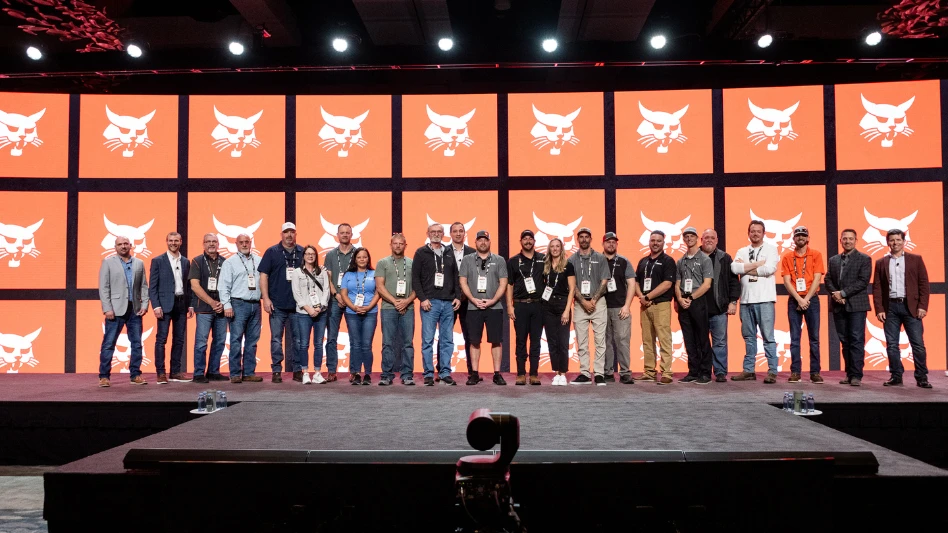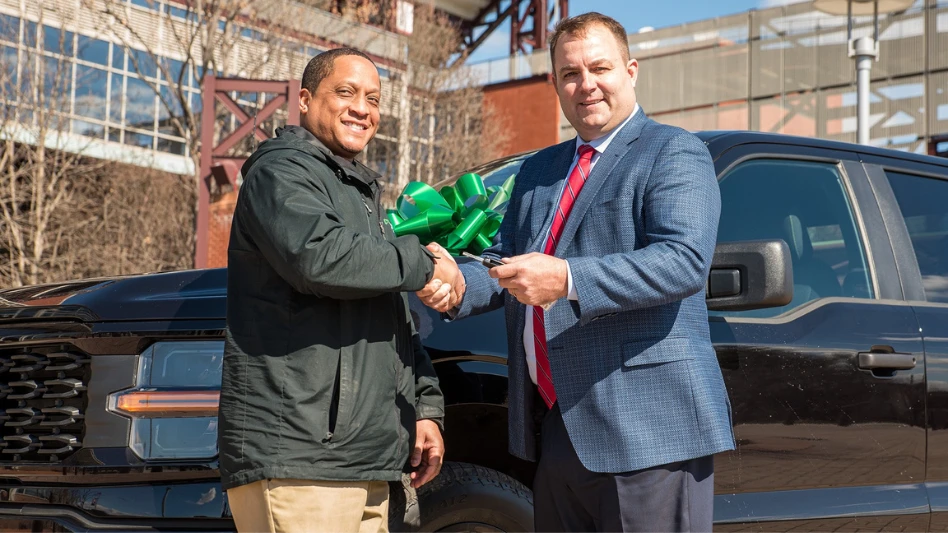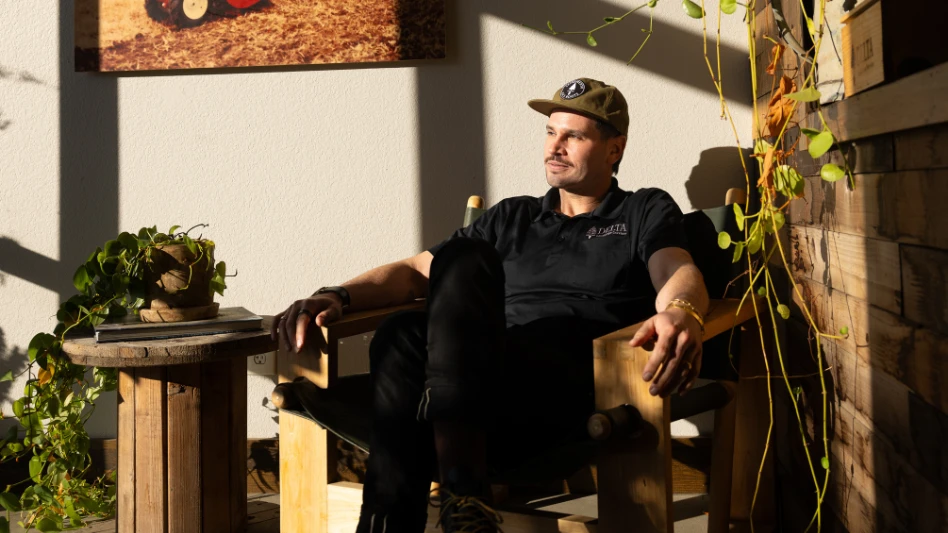At landscape seminars, Doug Oberman always asks attendees to raise their hands if they like to string trim. No one ever does.
Easing the burden of string trimming is one of the many ways plant growth regulators (PGRs) make a lawn and landscape professional’s life easier, says Oberman, product manager for PBI Gordon, Kansas City, Mo. The products also eliminate the need for weekly mowing, resulting in fewer clippings to clean up after a job and keep shrubs neat and orderly with less pruning. In all, PGRs reduce the time LCOs and landscape contractors spend performing mundane tasks, which can then be used for other, more profitable jobs.
“PGRs are used to reduce labor, which is then available to go to other or additional jobs,” Oberman says. “Contractors profit because they are able to reallocate that time.”
PGRs come in handy when labor is in short supply. Qualified employees are often hard to come by in the landscape and lawn care industries, and contractors are always looking for ways to cut corners without sacrificing the quality of their work. “PGR use is really starting to take off in the landscape industry,” says Roger Storey, vice president of turf and ornamental business, SePRO Corp., Carmel, Ind. “Lawn care operators want to address their No. 1 concern, which is labor, and are seeing that using PGRs can really pay off.”
TURF PERKS. Different types of PGRs do different things, but their primary purpose is to slow down a plant’s vertical growth and increase its lateral growth by altering its hormones. There are PGRs for turf and ornamentals that come in liquid, powder and granular forms. But, no matter how you spread or spray it, PGRs reduce mowing, trimming, pruning and clipping cleanup by as much as 50 percent, Oberman says.
On turf, PGRs slow the vertical growth of grass, enabling landscape contractors to stay on top of their mowing duties, particularly during the spring and summer heavy growth periods. “In the spring months it can be hard to stay ahead of mowing, and using PGRs can reduce the need to mow from twice-a-week to once-a-week,” Storey says. “Even if a client’s contract requires their lawn to be mowed twice a week, the amount of clippings to clear away will be drastically reduced.”
Turf has to be actively growing for a PGR to take effect, so one application in the spring and one in the fall should suffice for most areas, Oberman says. Each application generally lasts between four to six weeks. “You don’t want to apply PGRs during the stress period of July and August when it’s hot and dry or in the winter when it’s cold because grass usually goes dormant under these harsh conditions,” he says.
Certain PGRs have the tendency to cause discoloration to turf. To avoid this, Oberman suggests an application of liquid iron to retain a lawn’s green color. This can be applied before the PGR is sprayed or tank mixed and sprayed at the same time. Applying lower rates of PGRs can also limit discoloration, he says. “Discoloration depends on the product you use,” Oberman says. “It is not a common issue with ornamental PGRs.”
Andy Kadrich, owner of Turf Masters Lawn Care in Woodstock, Ga., tested turf PGRs on his most diligent lawn care customers two years ago. He chose to test the product on his lawn care customers who he knew would keep impeccable watering and mowing habits, which would help the PGR work as well as possible. These customers were able to go from mowing twice a week to, in some cases, once every three weeks, Kadrich says. “On the turf, the growth regulators passed with flying colors,” he says.
The compliment the company receives most often about its PGR use on turf is how much better their customers’ lawns look, Kadrich says. The product promotes lateral instead of vertical growth, so grass looks tighter and fuller and, because it’s not mowed as often, the grass retains a much greener color. The company now offers turf PGR application to all of its lawn care customers. “You’re not cutting the leaf tissue off as often and our customers notice better color and overall appearance,” he says. “From a grass standpoint, our customers love the service.”
ORDERLY ORNAMENTALS. When working with ornamentals, PGRs not only keep shrubbery looking neat for longer periods of time, but also can improve the quality of the plant material. By promoting lateral growth, PGRs enhance the flowering of shrubs and ornamentals which results in greener, fuller plants with more bud tips and interior branches, Storey says. “Flowering usually happens at a plant’s tip, and if you constantly prune a shrub’s branches, you prevent the flowering from occurring,” he says. “Continual aggressive pruning can weaken the plant overtime and have a negative effect on appearance.”
Most ornamentals need only one PGR application a year, as each application can last for up to 12 weeks. Only in areas like the deep South where the growing season lasts six months or more could ornamentals require more than one treatment, Oberman says. “Three months is the biggest part of the growing season, or at least the peak of the growing season, in most areas,” he says. “One treatment should do it in most places, but two might be necessary in the South because the growth season never really stops.”
Last year, Turf Masters incorporated full-service maintenance into its lawn care mix. To save time on pruning and trimming duties, the company will offer ornamental PGRs to its maintenance customers this year, and will offer it to lawn care customers in the future. “We don’t have a lot of experience with ornamental PGRs yet but, like with turf, we think it will help us stay on top of our game,” Kadrich says. “We’re going to offer it to our maintenance customers first because, being on their properties every week, we can more easily see the benefits firsthand.”
PICK YOUR PRODUCT. The type of PGR a contractor uses depends on personal preference. Some contractors find granular is best for treating ornamentals because it’s easier to spread the product underneath shrubs and ground covers for absorption through the roots, rather than spraying the product to be absorbed through the leaves. “Penetration into the inside leaves is necessary,” Oberman says. “You can’t just spray a light coating on the outside of the plant – you have to get inside of it too, which can take a bit more time.”
Storey agrees. “Granular formulations seem to be the preferred method when treating landscape ornamentals,” he says. “Also, granular PGRs don’t need to be mixed with water like liquid formulations do, so that step is eliminated.”
When using granular PGRs on both turf and ornamentals, contractors need to make sure their walk-behind and handheld spreaders are properly calibrated to achieve uniform coverage. They also have to apply the PGR under the drip line of plants that grow all the way to the ground. Often, this requires raking back mulch to apply it underneath. They also need to be aware of the type of soil they’re working with because it can be more difficult for granular PGRs to pass though heavier, clay-type soils to reach the roots where it is absorbed, Oberman says. Regardless of soil type, granular PGRs need to be watered in within a few hours of application for the product to properly take effect.
Liquid PGRs can be applied with either backpack or power sprayers, and are usually the preferred product for turf applications. Depending on how large or small an area is, one or the other may be more appropriate. Many say that uniform coverage can be achieved more easily with power sprayers because contractors don’t have to manually operate the device to apply the product. From a physical standpoint, mounted powered sprayers are usually best for large jobs of a few acres or more. “When using a backpack sprayer, sometimes the application is weaker or stronger in certain areas because it’s being done manually,” Oberman says. “Certainly backpack sprayers can work, but you have to be a little more thorough.”
Contractors need to ensure that the weather forecast doesn’t call for rain for 12 to 24 hours after liquid applications, Oberman says. This gives the product time to be absorbed through the leaves and take affect.
For turf applications, Kadrich’s crews use liquid PGRs applied with 200- to 600-gallon truck-mounted sprayers. Sticking with the general consensus that they’re easier to use, Kadrich plans to use granular PGRs for ornamental applications this spring.
Manufacturers agree the price of PGRs is extremely rate-dependant. Turf applications can cost anywhere from about $35 to $60 an acre, Storey says. Ornamental PGRs can cost from $15 to $70 per 1,000 square feet of treated area, depending on the application rate and what kind of species are being treated. “Even though it doesn’t sound like much, 1,000 square feet of shrubs is a lot of landscaping,” Storey says. “If you have a hedge that is 3 feet wide and 20 feet long, that is a 60-square-foot hedge. The value proposition of the PGR is very good compared to labor needed to prune the hedge over a season.”
PGRs can be a bit more costly than other lawn care products. For example, some preemergent herbicides cost from $3 to $3.50 per 1,000 square feet. However, the time contractors can save by using PGRs can usually compensate for their cost. “Labor shortage is always an issue in the green industry and lawn and landscape contractors are forced to do more with less,” Oberman says. “When doing more with less, using premium products helps.”
LABOR SAVERS. PGRs make doing more with less a feasible task. Manufacturers say the products can cut labor associated to mowing and trimming in half, and many contractors support this statistic.
During routine maintenance, Kadrich says his crews spend half the amount of time maintaining PGR-treated lawns than untreated lawns, and using PGRs keeps them a few steps ahead of the competition. “In the green industry, the weather is always a factor that makes you want to pull your hair out,” he says. “But even if it rains for a week and we can’t get out there and mow, our customers’ lawns will still look good and we can stay on top of the game.”
Not to mention the service can be profitable. Last year, Turf Masters generated an extra $30,000 in revenue from PGR applications alone. To price his PGR services, Kadrich charges 1½ times the price of a regular lawn chemical application. For example, if a client pays $40 for his regular lawn care routine, he will pay an additional $60 for a PGR application. Kadrich’s average customer receives seven lawn care treatments per year and four PGR treatments per year, with each PGR application lasting from four to five weeks.
To sell PGR services, Kadrich includes information and promotional coupons in the company’s newsletters that go out before each of the seven regular lawn chemical applications, which the company calls “rounds.” Each round’s newsletter highlights a different service, and the current round’s service is PGRs. “Round 3, which we’re in now, is when lawns come out of dormancy, so it’s a good time to get the word out about PGR applications,” he says. “The service has treated us really well ever since we started offering it. I’m kind of curious as to why more people don’t use PGRs.”

Explore the May 2007 Issue
Check out more from this issue and find your next story to read.
Latest from Lawn & Landscape
- Coxreels expands V-100 Series product line
- Landscape Workshop expands with 2 acquisitions
- Wilson360 adds Daniel Grange as new consultant
- Batman and business
- CH Products releases new tree stabilizer
- Savannah Bananas founder Jesse Cole to speak at Equip Exposition
- Catch up on last year's Benchmarking report
- Davey Tree promotes Kevin Marks as VP of Western operations





